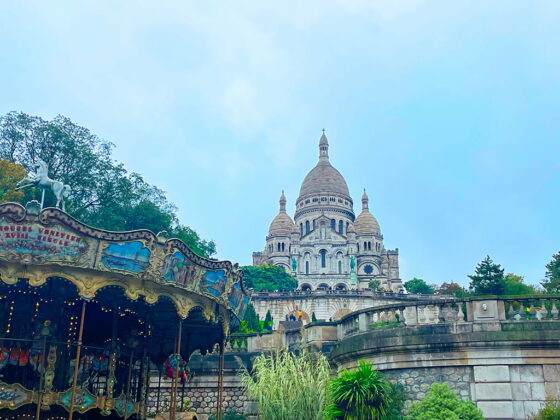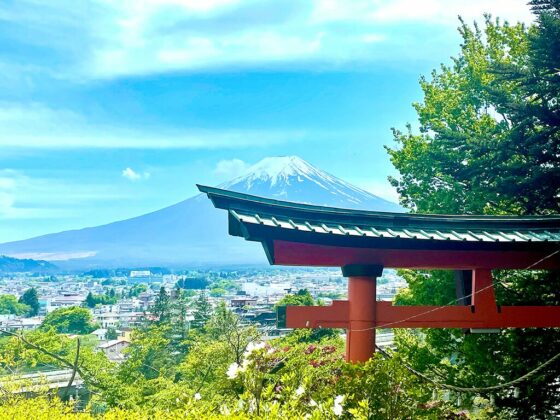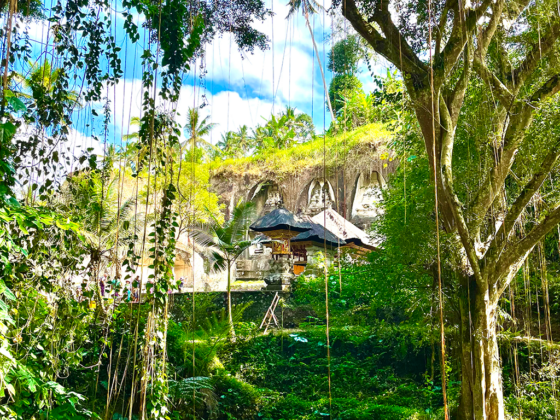If you are planning a trip to Japan, get ready to immerse yourself in a unique and fascinating experience. Before setting off on this adventure, it may be useful to consider a few aspects that will make organising your trip easier.
In this article, we will explore a number of practical tips, on some things to do and know before departure, which are essential to help you organise your trip in the best possible way.
Visa and Visit Japan Web
Italian citizens entering Japan for tourism do not require a visa for up to 90 days.
For entry into the country you need to fill in two sheets, where you are asked for your personal details, passport details, information on what you are taking with you, the address of where you will be staying in Japan (if you plan to travel, put the first place you will be staying), statements about any criminal convictions and, finally, your signature. The first sheet is to be handed in at passport control, as soon as you get off the plane, and the second after you retrieve your luggage, before leaving the inner area of the airport.
Our advice is to use the Visit Japan Web platform to carry out the procedure calmly and before arriving in Japan. Completion is NOT compulsory but recommended. The Visit Japan Web is the platform created by the Japanese government to speed up and streamline the procedures for arriving in Japan. This service allows you to pre-register the documents required for entry into Japan.
Simply log on to the Visit Japan Web site and register. After entering your personal and travel details, you can proceed to the following steps:
- Disembarkation Card procedure: In this procedure you have to enter your travel details and answer 3 questions (whether you have ever been removed from Japan with a deportation order or been denied entry in the past, whether you have ever been charged in Japan or abroad, whether you are carrying prohibited items such as drugs or weapons). Once you have completed registration, you will be able to download a QR code. The colour above the QR code serves only to distinguish it from the ‘custom declaration’.
- Declaration of personal effects procedure: This procedure allows you to enter all those items that need to be declared when entering Japan. Carefully read all the forms that are offered to you and answer whether or not you are bringing the listed items. Again, you will be given a QR code at the end of the procedure. The colour above the QR code serves only to distinguish it from the ‘immigration declaration’.
- Health insurance declaration procedure: This procedure is not necessary, but recommended. It allows you to enter whether or not you have health insurance for your trip.
Currency and payments
In Japan, the currency is the yen (円).
In general, cash payment is preferred over electronic payment. Also credit cards and ATMs are not always accepted, especially in small restaurants and small shops where cash is often the only means of payment. Entrances to temples and souvenirs bought there are all charged in cash, while in small shops in the vicinity it is often possible to pay with a card.
The best way to withdraw cash in Japan is at a Japanese automatic teller machine (ATM). The best ATMs where you can withdraw cash are the 7-Eleven, which are easy to use, spread all over Japan and open 24/7. If your card is part of the international circuits (Visa, Mastercard, Maestro, Cirrus, American Express) there should be no problem. We withdrew some cash at an ATM already at the airport.
Remember to check that your credit cards are enabled for Japan and that there are no daily withdrawal limits.
How to move
Japan has one of the best public transport networks in the world, with clean, safe, efficient and punctual means of transport including trains of various kinds (local, express, bullet trains, etc.), subways, buses and coaches.
Railway networks
There are several companies that operate transport. The largest and best known is Japan Railways, which comprises six regional companies including subways, local trains and the famous ‘bullet trains’ or Shinkansen, which are very useful for travelling comfortably and quickly between cities such as Tokyo, Kyoto and Osaka. Other private companies such as the Odakyu, Tokyu or Keio, on the other hand, connect Tokyo to more peripheral areas. In the Kansai area, Hankyu, Hanshin and Keihan connect the three largest cities in the region: Kyoto, Osaka and Kobe. However, apart from slight variations in price and coverage of different routes, they all offer excellent services.
Our advice is to check the routes that interest you and the most convenient options for your itinerary before buying a pass. The best-known JR routes are complemented by those of lesser-known companies, which are often cheaper and more convenient in terms of timetables and number of changes. Does the Japan Rail Pass suit your itinerary? In the travel tips you can find out quickly and easily!
As far as local trains are concerned, it is important to be able to distinguish between the various categories, so that you can avoid the slower ones, which would make you lose a lot of time if your destination could be reached by faster means. Here is a small breakdown of the various types:
- Local: they stop at every station and are by far the slowest;
- Rapid: despite their name, they are not the fastest, but they allow you to skip a few stations for the same price as locals;
- Express: offer a faster service than rapid, skipping a good portion of stations, but may be slightly more expensive;
- Limited Express: these are by far the fastest as they only stop at main stations and usually charge a higher fare.
Trains
Trains are by far the most popular method of transport for travelling within Japan as they allow you to get around quickly and at the same time, while not cheap, offer the possibility of saving money thanks to a range of passes available, including the better known Japan Rail Pass (not always cheap. Check the tips at the end of the article to see if it’s convenient for your itinerary).
To juggle routes, changes and timetables, the advice is to use an app that allows you to plan and customise a trip to Japan, both to travel within a city and between locations, as in addition to up-to-date timetables, you need to consider the many options between the various rail or bus networks. We used the Japan Travel app but another highly recommended app is Hyperdia.
Most trains do not operate 24 hours a day, even in large cities. However, there are special long-distance night lines that run between Japan’s major cities.
Bus
Japan has an efficient bus network, with local lines serving the various cities and long-distance buses providing day and night routes between major tourist locations. The network is quite extensive, making it possible to cover all those areas where trains and other transport are not present.
There are buses that connect major cities at a cheap price but the journey times are much longer. Some of these are nocturnal so it might be a good alternative to travel at night and save the cost of a hotel.
As for local buses, you are unlikely to use them in big cities (such as Tokyo), but they are certainly convenient in small towns or tourist locations where the local metro network is not so extensive (e.g. Kyoto or the Mount Fuji or Nikko area). Buses have a fairly simple ticket system: you usually enter through the back door and take a ticket from the ticket machine. You then simply insert the ticket into the machine next to the driver and check the price on the electronic display. In some locations and on some vehicles, rechargeable IC cards such as Pasmo and Suica are accepted.
Underground
Tokyo. The Tokyo Metro has an extensive metro network operated by two companies, Tokyo Metoro and Toei. Attention must be paid to the fact that special services are operated on some underground lines with continuations on private railways. Trains often continue well beyond the underground terminals. Five railway stations are key hubs of the Tokyo metro network: Tokyo, Ueno, Ikebukuro, Shinjuku, Shibuya. To these must be added Shinagawa, a station of the conventional and high-speed railway network, which can be reached on foot from Takanawa Station (underground).
Kyoto. Kyoto is a very dispersed city and the various things to see are far from each other. Although there is a metro, it is not the most used means of getting around. Buses, which cover the entire urban area, prevail here, as opposed to the metro, which does not go as far as certain areas, even near the most popular sights.
Osaka. Osaka has an efficient metro network integrated with several railway lines serving urban, suburban and regional traffic (JR West, Keihan, Kintetsu, Hankyu, Hanshin and Nankai). There is also a circular line (Osaka Kanjo-sen, JR national network). This is very useful as it allows easy connections between the numerous metro lines and stations.
Prepaid IC cards: PASMO, SUICA and ICOCA
One of the most convenient payment methods in Japan is through prepaid IC cards. The most widely used are the Pasmo, Suica and ICOCA, which differ little in both cost and use. With these you can pay for urban transport, products from konbini, some cafeterias and vending machines, and coin lockers inside stations.
We opted for the PASMO and bought it from the machines at the metro station. It costs ¥1000, of which ¥500 will go as available credit and ¥500 as a deposit, which will be returned to you once you return the card. If you can’t return it (or you don’t want to because you want to keep it as a souvenir), know that the PASMO is valid for 10 years. To top it up, simply insert it in the machines at the station (there are plenty of them at any station) and pay in cash or with the card.
WARNING: Due to the lack of chips globally, the sale of physical IC cards is limited both in terms of quantity and places to purchase them.
- IC PASMO PASSPORT(https://www.pasmo.co.jp/visitors/en/) and WELCOME SUICA(https://www.jreast.co.jp/multi/welcomesuica/welcomesuica.html ) cards for tourists are available at Narita and Haneda airports, as well as at the main stations of the Tokyo metropolis.
- Smartphone apps such as Mobile Suica and Mobile PASMO can still be used via Apple Pay with iPhone 8 and later models, or Google Pay with some Android smartphones.
- Other IC cards sold outside the Tokyo area, such as ICOCA and TOICA, will continue to be available in each region.
Internet connection
Surviving in Japan without the internet is complicated, it is indispensable mainly for directions, train, metro and bus timetables, to try to understand something of the Japanese ideograms (Google translate saves lives!).
So, there are two solutions to get the Internet:
- purchasing a Japanese SIM card from one of the vending machines you can find at international airports, where you can choose the type of SIM and the tariff plan;
- the rental of a pocket wi-fi, a small portable modem, the rental of which is offered by various sites and companies; we opted for this one.
At the time of purchase you can choose the address where you want to pick up the modem or where it should be delivered, which can be at the airport upon arrival or directly at your hotel (we picked it up at Tokyo airport to get internet right away). They will also ask you where you want to return the modem once the period of use has ended, which can be at the airport before departure or directly at your hotel (we returned it at Osaka airport shortly before departure). Another option is to send the modem after the end of use. Inside the envelope containing your device, you will also find a prepaid envelope with the address of the company where you rented it. At the end of your journey put the Pocket Wifi and everything else inside the envelope and post it in a mailbox. Be very careful because there are no mailboxes at the airport after security checks, so if you accidentally forget to mail it, you will have to ship it from Italy, paying international postage.
Our pocket wi-fi worked very well in all the cities we visited even with two devices connected. The battery tended to last until evening but the advice is to always carry a power bank (also useful for mobile phones).
Power sockets and voltage
In Italy, various sockets are used: the Schuko (Type F and hybrid Type F+E), the two-pole (Type C) and the three-pole narrow and wide (Type L). In Japan, on the other hand, a socket with two rectangular poles (Type A) is used, and more rarely one with three poles (Type B). Bring a universal adapter so you don’t have any problems. Our advice is to bring a multi-socket outlet with you so that with just one adapter you can connect all your devices!
However, one must also be careful about the voltage! In Italy, 230 V is used at a frequency of 50 Hz. In Japan, on the other hand, 100 V is used at a frequency of 50 Hz for the eastern part of the country (Tokyo, Sapporo, Sendai) and 60 Hz for the western part (Nagoya, Kyoto, Osaka, Hiroshima). By now, most electronic devices have a power supply that operates with a voltage between 100 and 240 V and a frequency of 50/60 Hz. To check that your chargers and hairdryers also work in Japan, just look at the label: if you find the words ‘input 100V-240V 50/60 Hz’, rest assured that they will work in Japan. Also be careful when buying electronic devices in Japan, check that they are compatible with a voltage of 230V.
Time zone
Japan is in the UTC +9 time zone while Italy is in UTC +1. In winter, when we use standard time, Japan is 8 hours ahead, while in summer, with daylight saving time, the difference is 7 hours.
Fortunately, however, all of Japan adopts the same time zone: Tokyo time is the same as Osaka, Kyoto and even the Okinawa islands.
How to behave in Japan
Going to a country also means taking into account the rules that society has; it is a question of respect, and following them will make you enjoy your trip without running into unpleasant situations. In Japan, a country that is very sensitive to social dynamics, it is good to have certain cautions:
- It is best to avoid drinking and eating in the street and on transport; if you must do so, stop next to a petrol station or in areas with tables set up for this purpose; on trains such as the shinkansen it is possible to eat;
- do not smoke in the street except in designated areas, which are usually in corners next to ashtrays; some venues also have separate smoking and non-smoking areas;
- respect queues, especially in front of metro doors; just follow the example of the people around you to know where to stand and how to behave;
- do not talk loudly on the vehicles, take off ring tones and, if you have backpacks or suitcases, take them off your shoulders during rush hours and try to take up as little space as possible (there are also over-seat storage compartments where you can put your bags);
- if you have a cold or some other contagious virus, walk around with a mask over your nose and mouth so you don’t infect the people next to you; the Japanese value hygiene and miss very few school/work days even if you are sick.
- inside temples and shrines it is polite to speak softly or not at all, to take off one’s shoes at the entrance and not to take photos, unless permitted;
- do not plant your chopsticks vertically in the rice bowl and do not pass food from one pair of chopsticks to the other; both gestures are part of Buddhist funeral rituals, and therefore considered bad omen, as well as rude;
- wash yourself before entering an onsen (thermal baths) and, if you have tattoos, ask if you can enter (tattoos in Japan are still not well liked).
Travel Tips
Is the Japan Rail Pass worth it?
The Japan Rail Pass is a pass that allows you to travel on all JR lines, including those within Tokyo, with the exception of two shinkansen, the Nozomi and the Mizuho. The price and duration of the pass vary: there are options for 7, 14 and 21 days (costs may vary from year to year and also according to season).
Buying a JR Pass is only worthwhile if you plan to travel a lot during your stay in Japan. Luckily, there is a quick and easy way to check if the purchase is worthwhile: just visit this site and entering the stages of your itinerary will tell you whether or not it is worth it!
If so, to purchase the JRP, simply visit the official website (available in English) or the Japan Experience and select your chosen option. The pass can only be purchased by non-Japanese citizens and from abroad, prior to departure. After ordering online, a voucher will be delivered to your home, which must be exchanged for the actual pass once in Japan, at one of the JR offices, within 3 months of purchase. It is also possible to purchase it directly on site, but to save time it is advisable to do this online before departure.
It is possible to ship luggage from one city to another
One of the most ingenious services that the Japanese people have produced is undoubtedly that which allows you to send your luggage from one destination to another without the effort of having to carry suitcases up and down station stairs or on and off trains. Given that this is a journey that involves a fair amount of travelling and changing, being free of excessive weight and having your hands free radically changes the quality of the journey.
Many hotels offer this service, just ask at reception for the ‘takkyubin’ service and pay directly according to the size of the suitcase: the cost of shipping is in the range of 1500-2000 yen. Some hotels may charge a small fee for this service.
In the unlikely event that your hotel does not provide this service, you can go to a conbini. You can also book this service at the airport upon arrival in Japan by going to the ‘Luggage Delivery’ counter.
Luggage is usually delivered within one day. For transfers within the same city the delivery may even be the same day, while for very distant locations such as Hokkaido or Okinawa it may take 2 days.
Our advice is to send your luggage the day before your departure for the next stage and pack a backpack with your toiletries and change for the following day (you can store it in a convenient coin locker – see below – while you tour the city). This way you will find your bags ready and waiting for you at the hotel when you arrive.
Coin lockers are convenient and safe
Coin Lockers or luggage lockers in Japan are everywhere, and are widely used. They are mostly found in stations and in some of the busiest tourist spots, but sometimes they can also be found on side streets – look around and you are bound to see one.
Our advice is to use them to store backpacks or hand luggage while waiting for trains when travelling between cities. We found them very useful for not wandering around the city with heavy backpacks while waiting for the late afternoon Shinkansen.
Coin Lockers work in a fairly simple way: usually next to the locker there is a key that is issued following the insertion of coins and the closing of the locker door. In other cases, there is a totem built into or adjacent to the locker that also works with CIs (such as Pasmo, Suica, ICOCA, etc.).
In the latter case, a PIN is issued for opening. Usually the instructions are also in English and if there is a touch screen that too provides for changing the language. Be very careful because every time you open the coin locker, you have to pay the fee again to close it.
Different sizes of lockers are available depending on requirements: Small (25/30 cm height, 35/40 cm width and 55/60 cm depth), Medium (55/60 cm height, 35/40 cm width and 55/60 cm depth), Large (85/95 cm height, 35/40 cm width and 55/60 cm depth) and Extra Large (100/120 cm height, 35/40 cm width and 55/60 cm depth).
Especially in larger stations with lots of Coin Lockers (all the same) I recommend taking a photo of the place, or sending the location via Whatsapp so you can be sure to find your suitcase.
There are no waste bins
People underestimate the importance of a wastebasket when they can’t find one. In Japan, you won’t find any rubbish bins lying around on the streets, so if you don’t want to be forced to wander around with oily wrappings in your hand or pocket, our advice is to always carry a small plastic bag with you where you can put your rubbish that you can throw away at the hotel at the end of the day.
If you pick up a can from a vending machine or stop to eat at one of the many street food stalls, you will almost always find a place to throw it away, but if you are out and about and want to empty your pockets or enjoy a snack you have in your rucksack, it can be very tricky to find a bin to throw your rubbish in!
Now you are ready to plan your trip to Japan! Also read our article Classic Japan Itinerary for tips on what to visit, where to stay and how to get around Japan’s main cities.
Last modified: 15 June 2025






